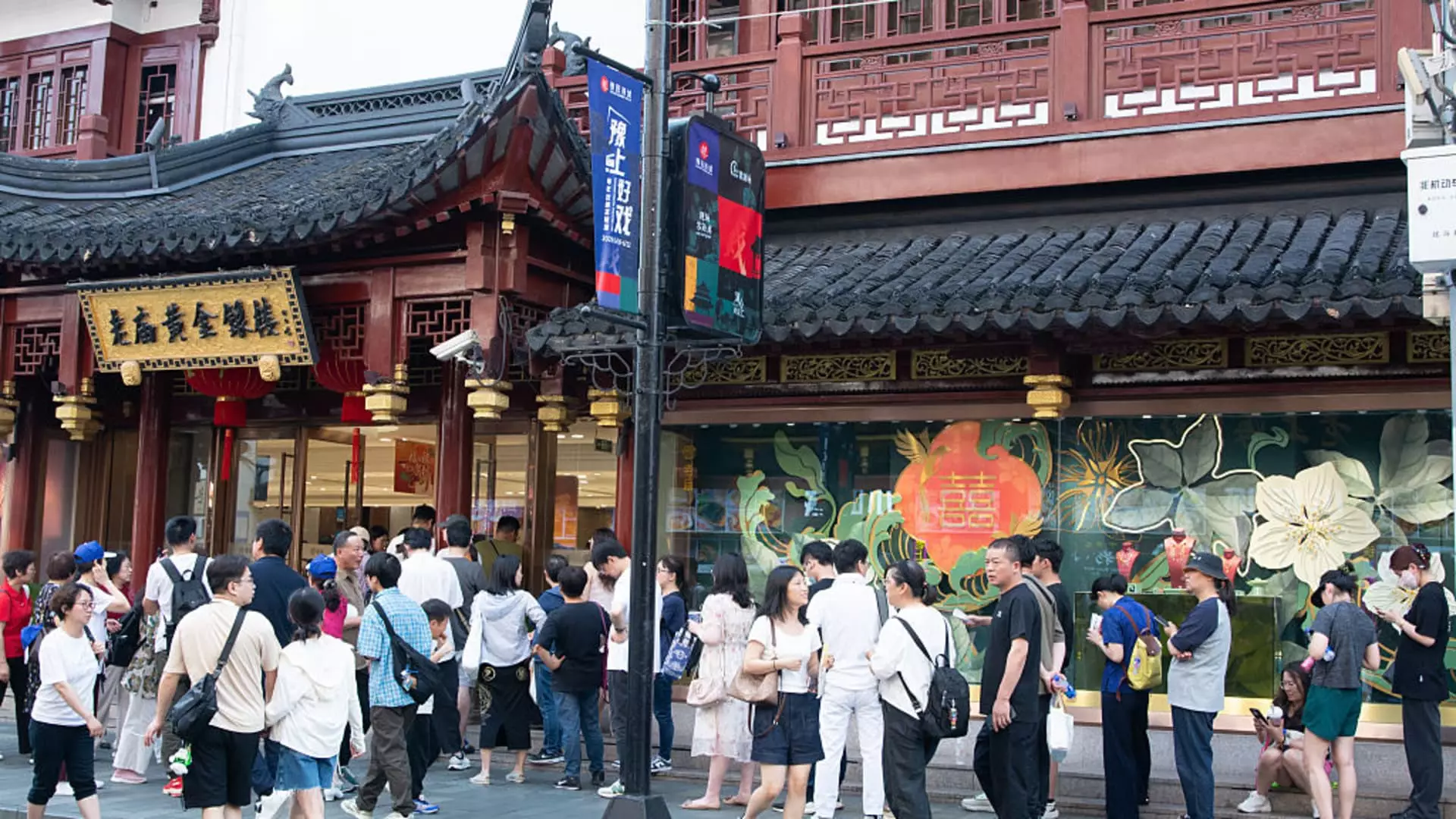China’s economy has recently witnessed an uptick in retail sales growth, with May’s figures rising by an impressive 6.4% compared to the same month last year. For many, this spike might seem like a sign of recovery in the world’s second-largest economy, especially considering the dismal backdrop of ongoing deflation and sluggish growth. But is this growth merely a temporary boost fueled by government intervention, or could it signify a more substantial, lasting change in consumer behavior?
The National Bureau of Statistics (NBS) noted that the increase in consumption can be largely attributed to the government’s consumer goods trade-in program, which incentivizes shoppers to replace old items. Online shopping has surged ahead of the major “618” e-commerce event, and the relaxation of visa regulations has brought foreign tourists back to China, further fueling spending. However, this optimism should be tempered with a grain of skepticism—can one month of substantial growth overshadow the underlying economic vulnerabilities?
The Ominous Threat of Deflation
Despite the promising retail sales figures, analysts have expressed concerns about the persistent deflation that weighs heavily on the economy. Consumer prices have fallen for four straight months, creating a troubling environment for both consumers and businesses. Individuals in China are less likely to spend when they anticipate that prices will decrease even further. This psychological grip of deflation can hinder economic recovery more than any temporary sales surge can help it.
Zhiwei Zhang, the president and chief economist at Pinpoint Asset Management, warned that falling property prices may dampen consumer sentiment. With property investment contracting sharply—down 10.7% in the first five months of the year—the fear is that residents may hold off on spending, anticipating that home prices will continue to decline. The sentiment that “waiting” for the market to stabilize is more advantageous than making a purchase ripples throughout the economy, serving as a robust barrier against sustainable growth.
Trade Wars and Economic Policy: A Double-Edged Sword
Adding to the complexity of the situation is the trade relationship between China and the United States. While a temporary tariff truce may have provided a moment of relief, the reality is stark: exports to the U.S. have plummeted by over 34% year-on-year. This kind of decline not only poses a threat to manufacturing jobs but also dampens investor confidence in long-term growth potential.
Moreover, the sudden uptick in domestic retail sales has drawn attention to the Chinese government’s role in sustaining this momentum. Analysts are calling for additional stimulus measures to prolong the recovery, but the government’s past reluctance to intervene decisively raises questions about the depth of their commitment. Will policymakers take action to support consumption, or will they retreat when the current brief moment of growth provides an illusion of stability?
The Fragile Foundation of Growth
Looking deeper into the mixed economic signals, we see the foundations of growth in China are fragile at best. Industrial output has also seen a slowdown, dropping to 5.8% year-on-year, just shy of the expected figures. Fixed-asset investments are underwhelming, failing to meet economic targets and suggesting a broader hesitance among investors. The stark contrast between the seemingly positive retail sales and the ominous signals from other economic indicators is unsettling.
As consumer sentiment is pivotal to reviving the economy, the lack of long-term planning could provoke an economic cliff. Local governments have already exhausted their subsidies for consumer goods, halting trade-in programs that were vital for enticing customers to spend. The looming prospect of diminished support—coupled with the end of the popular e-commerce shopping festival—raises critical questions about the longevity of this brief period of growth.
A Stubbornly Uncertain Future
The mixed bag of economic indicators currently painting the Chinese economy presents a sobering reality, even amidst the celebratory headlines of rising retail sales. As the global economy grapples with its own challenges, the repercussions of China’s inflationary pressures and consumer hesitancy can’t be overstated. While some experts predict growth above 5% for the first half of the year, one can’t ignore the underlying issues that may lead to a future downturn.
Economists like Jianwei Xu of Natixis have voiced apprehension, warning that without further demand-side stimulus, the consumption recovery may very well be short-lived. This caution is echoed across the financial landscape, as the valuable question remains: will the Chinese government muster the willpower to enact a robust response before the rising optimism of today transforms back into the sobering economic realities of tomorrow?

